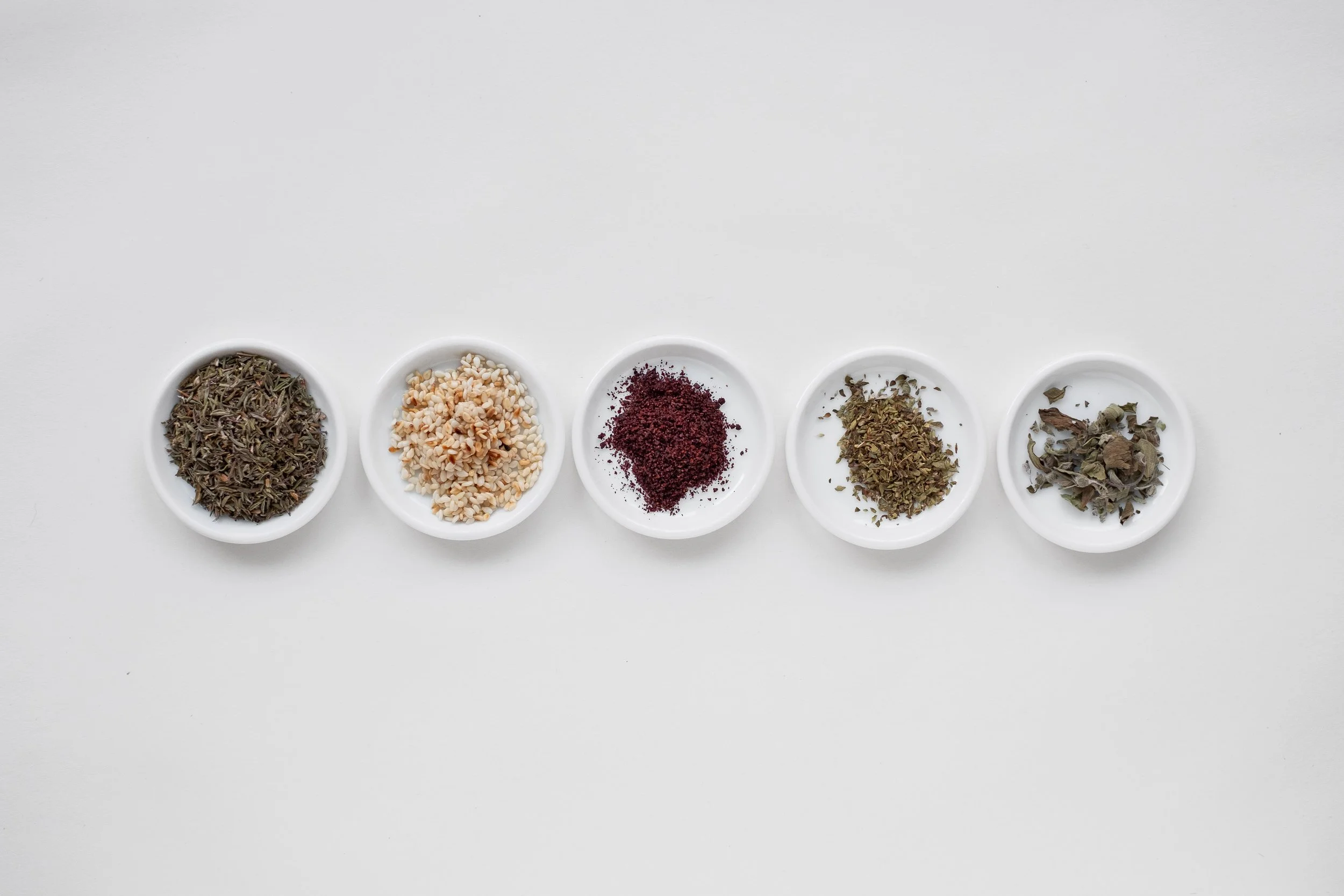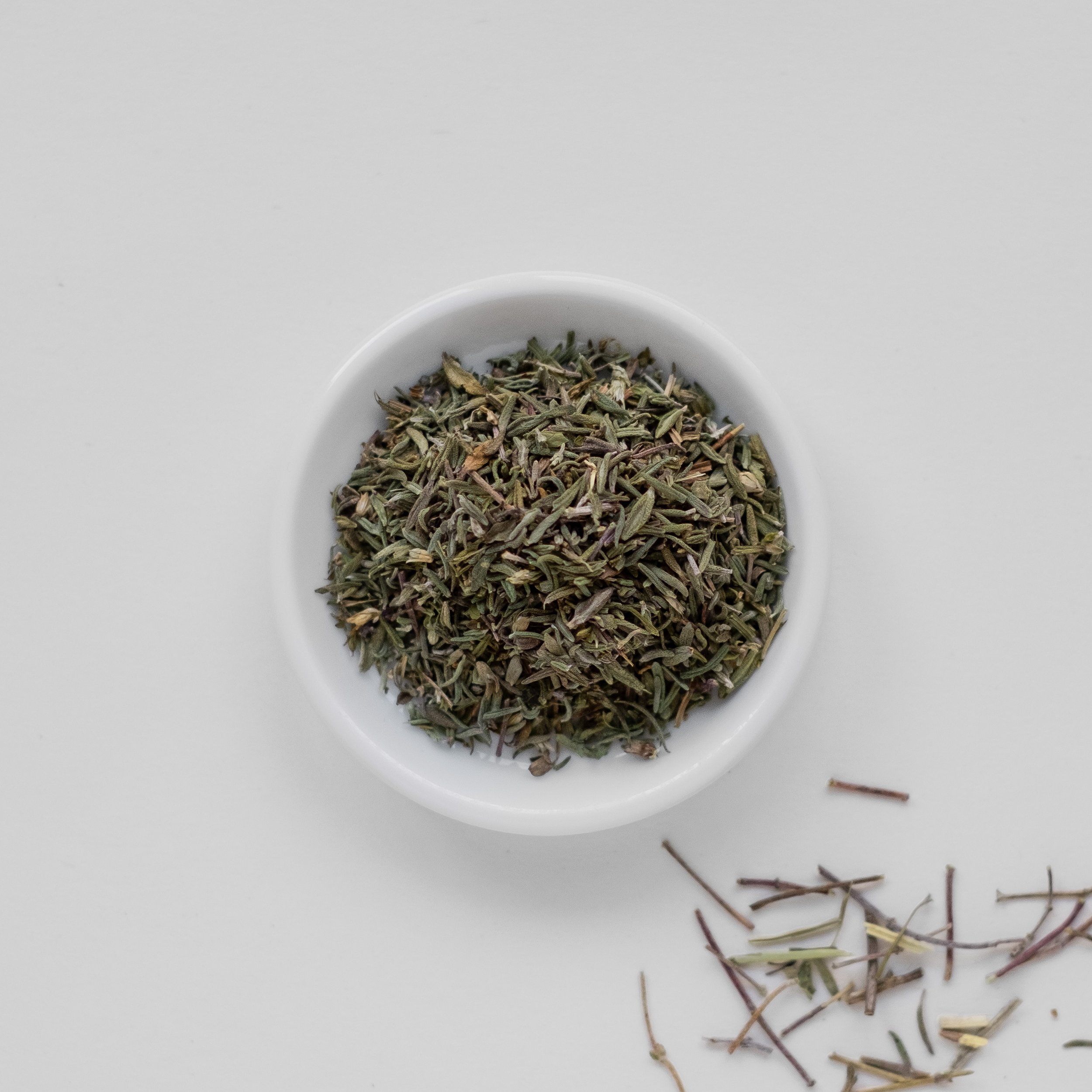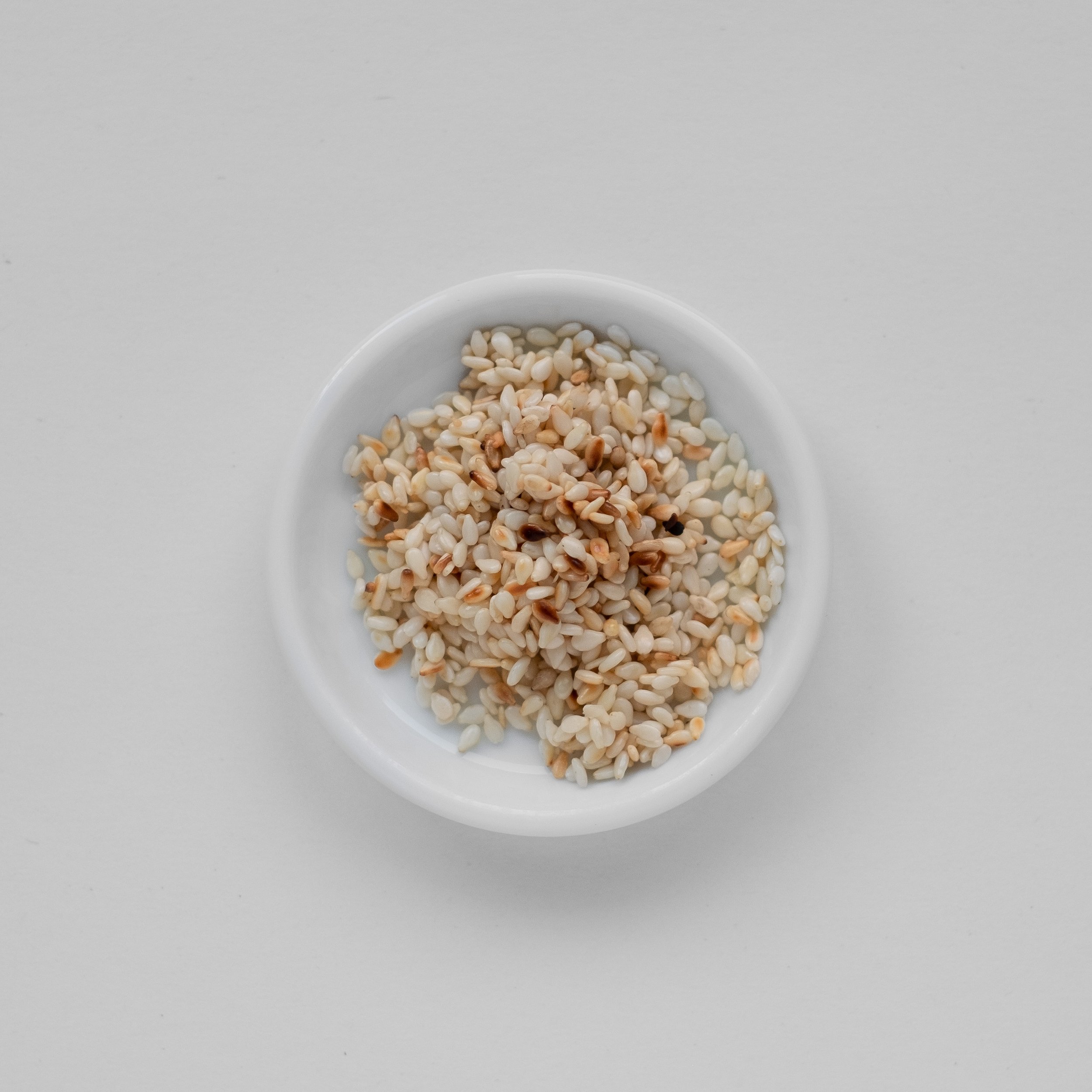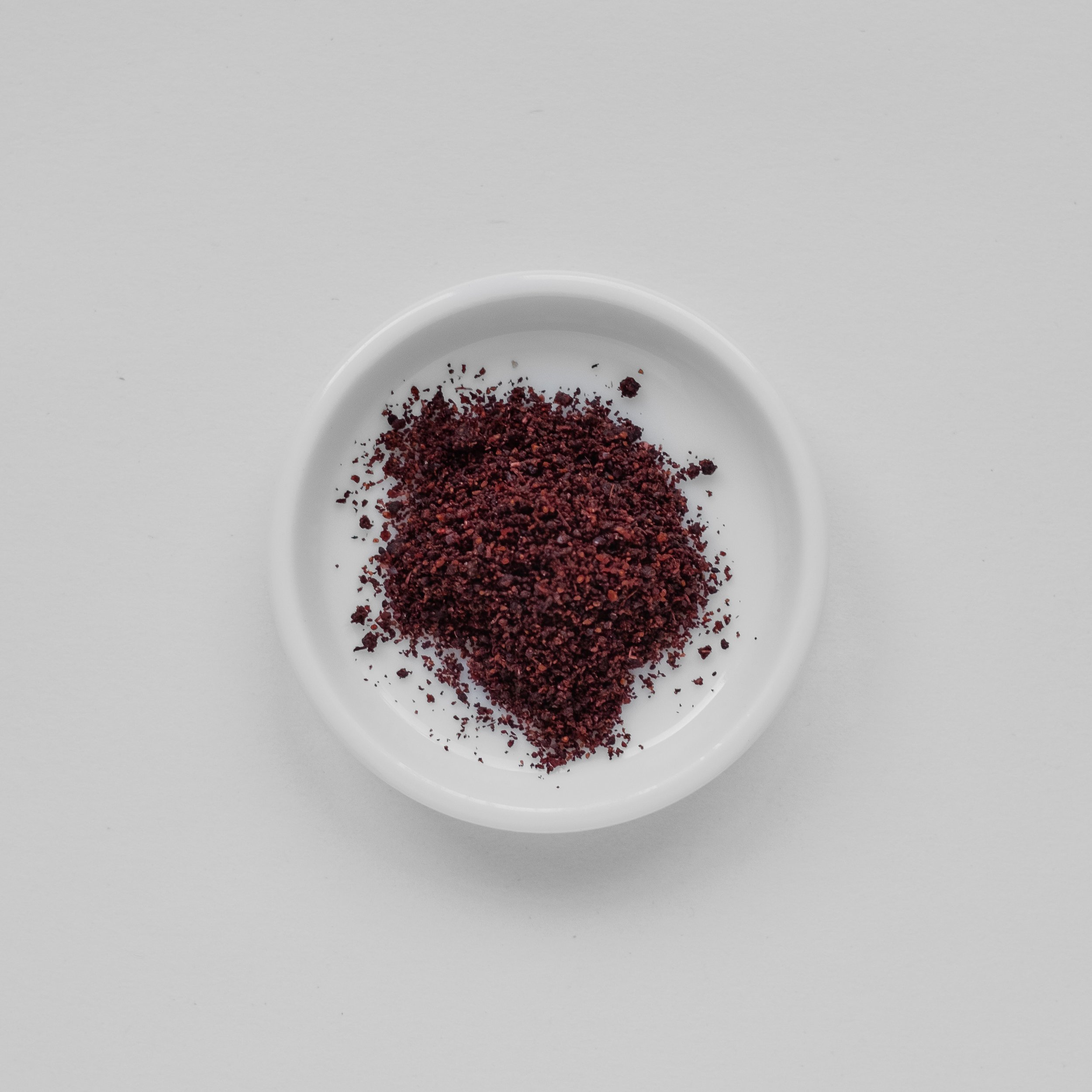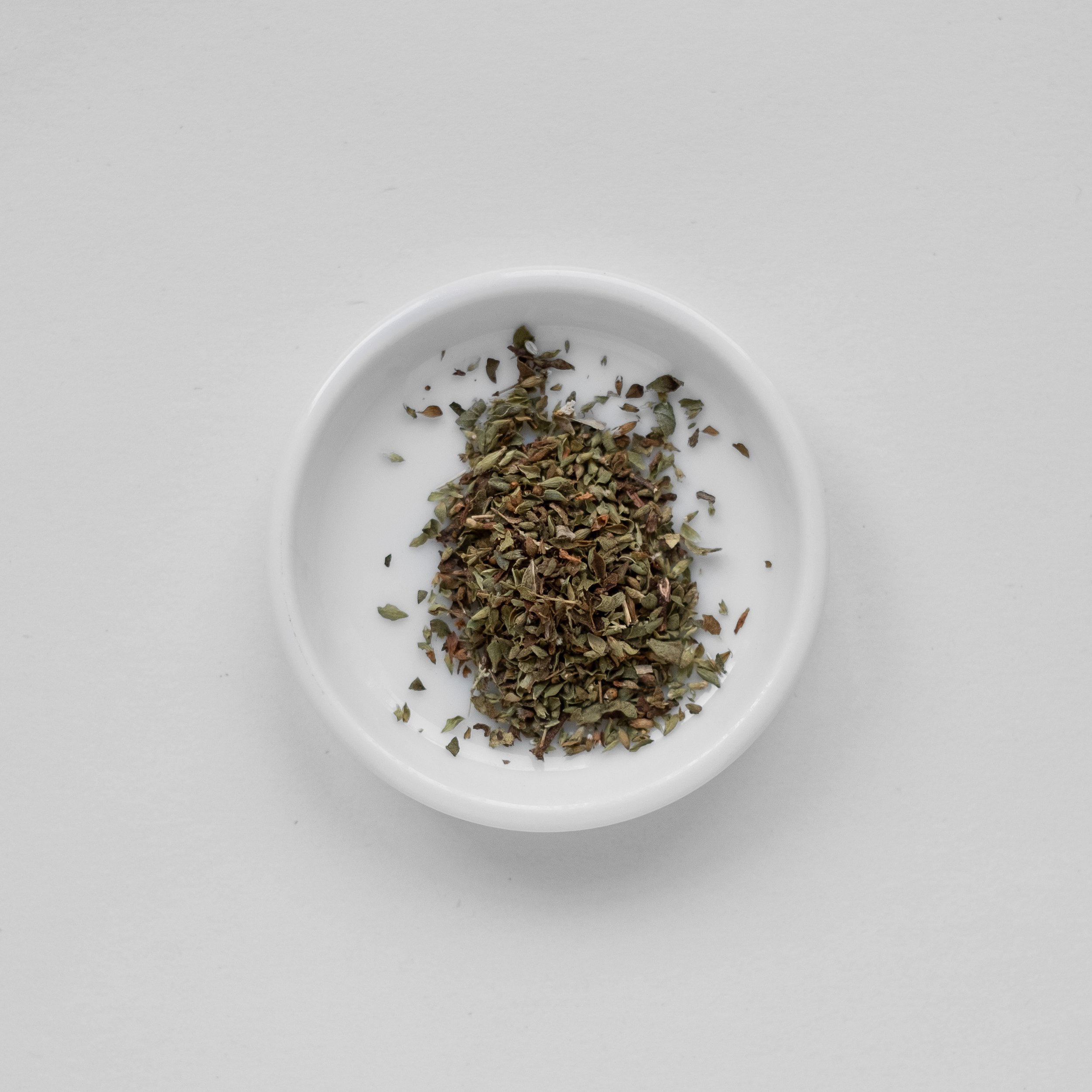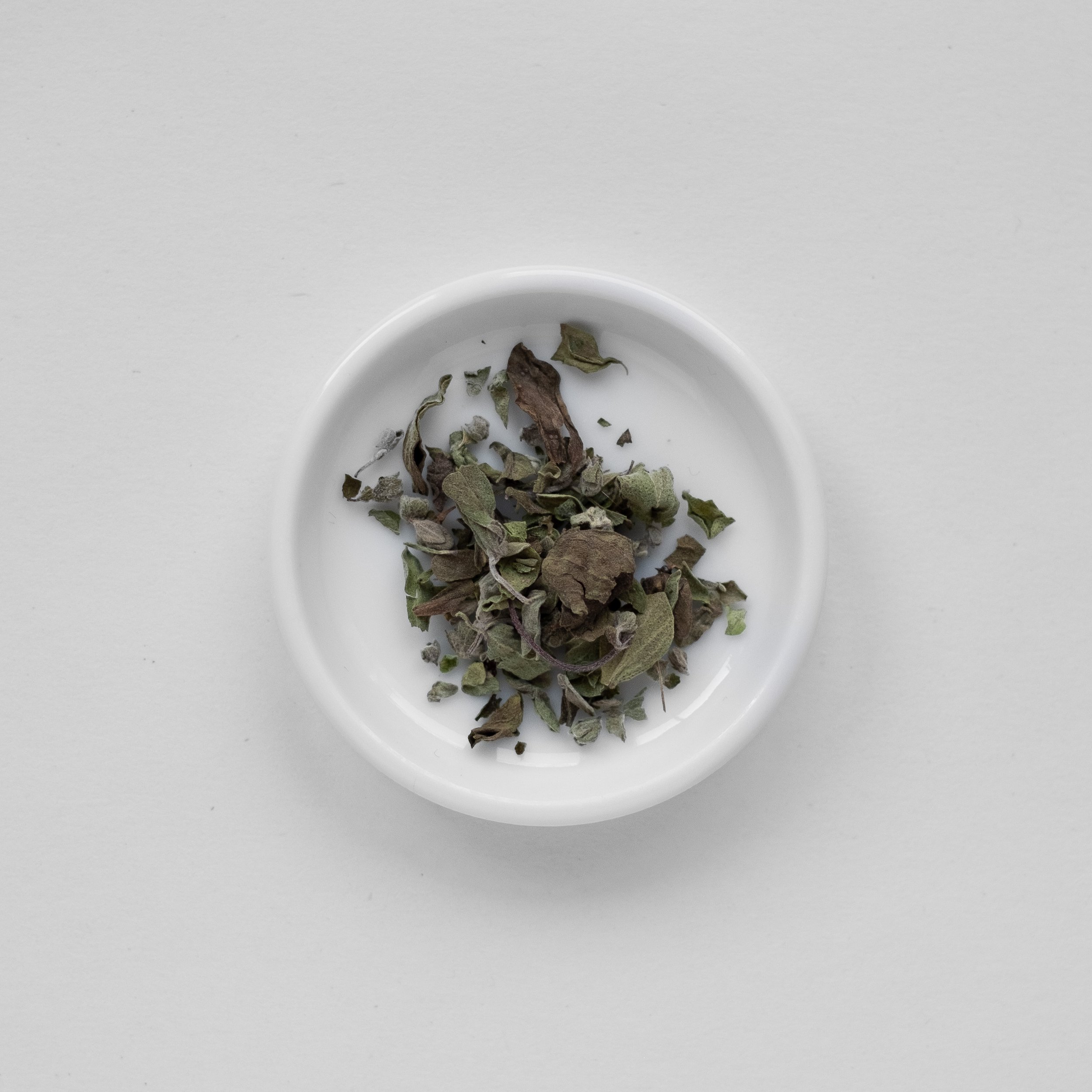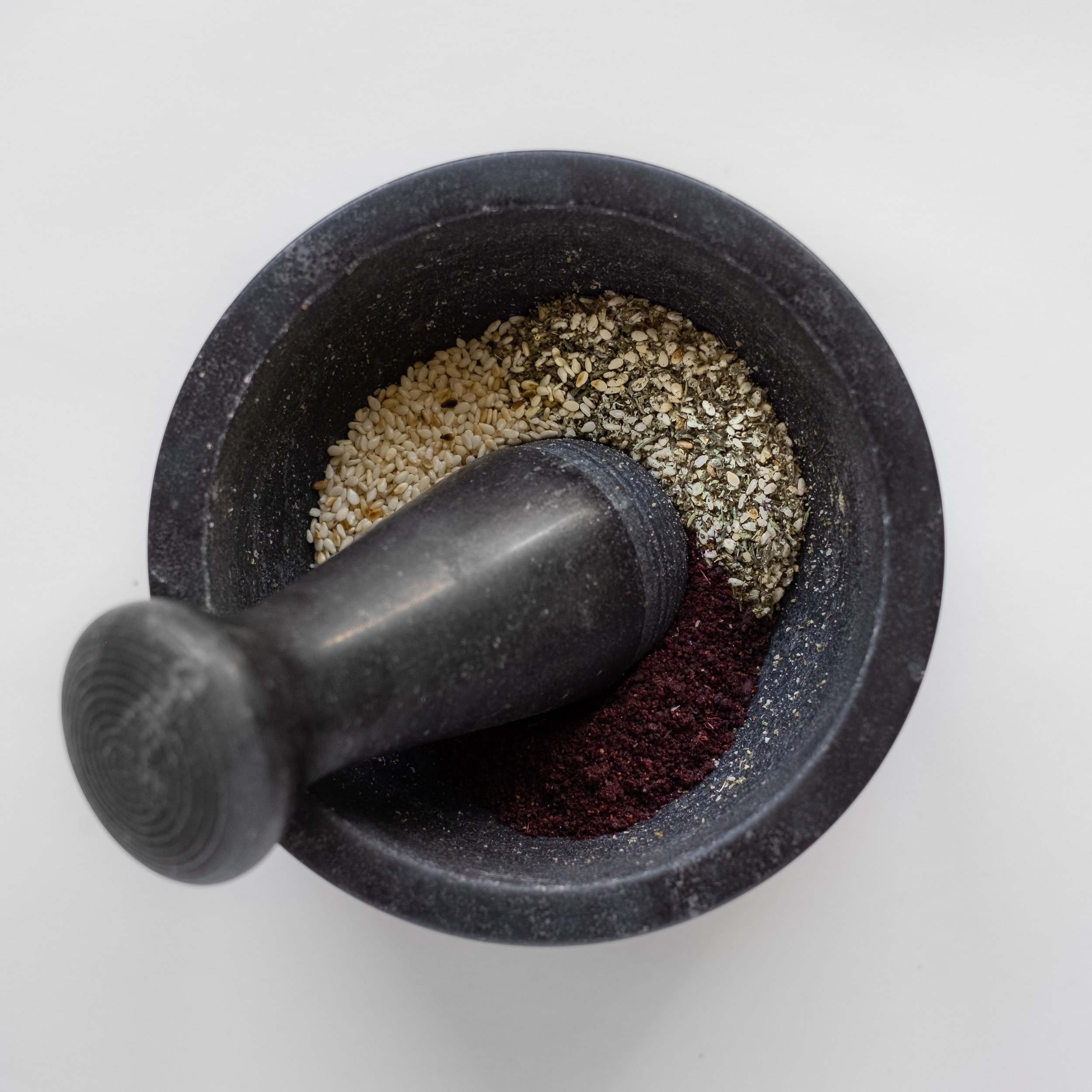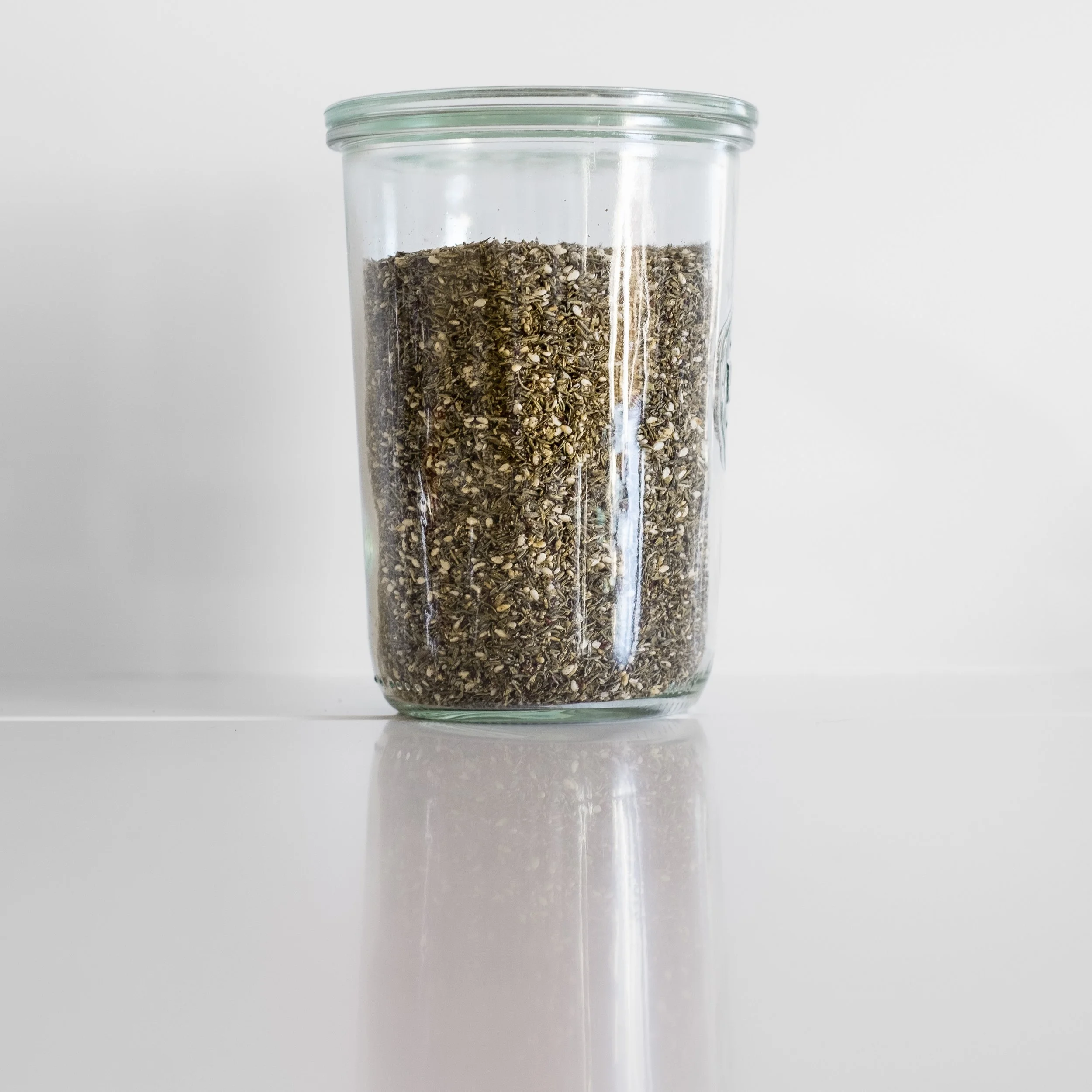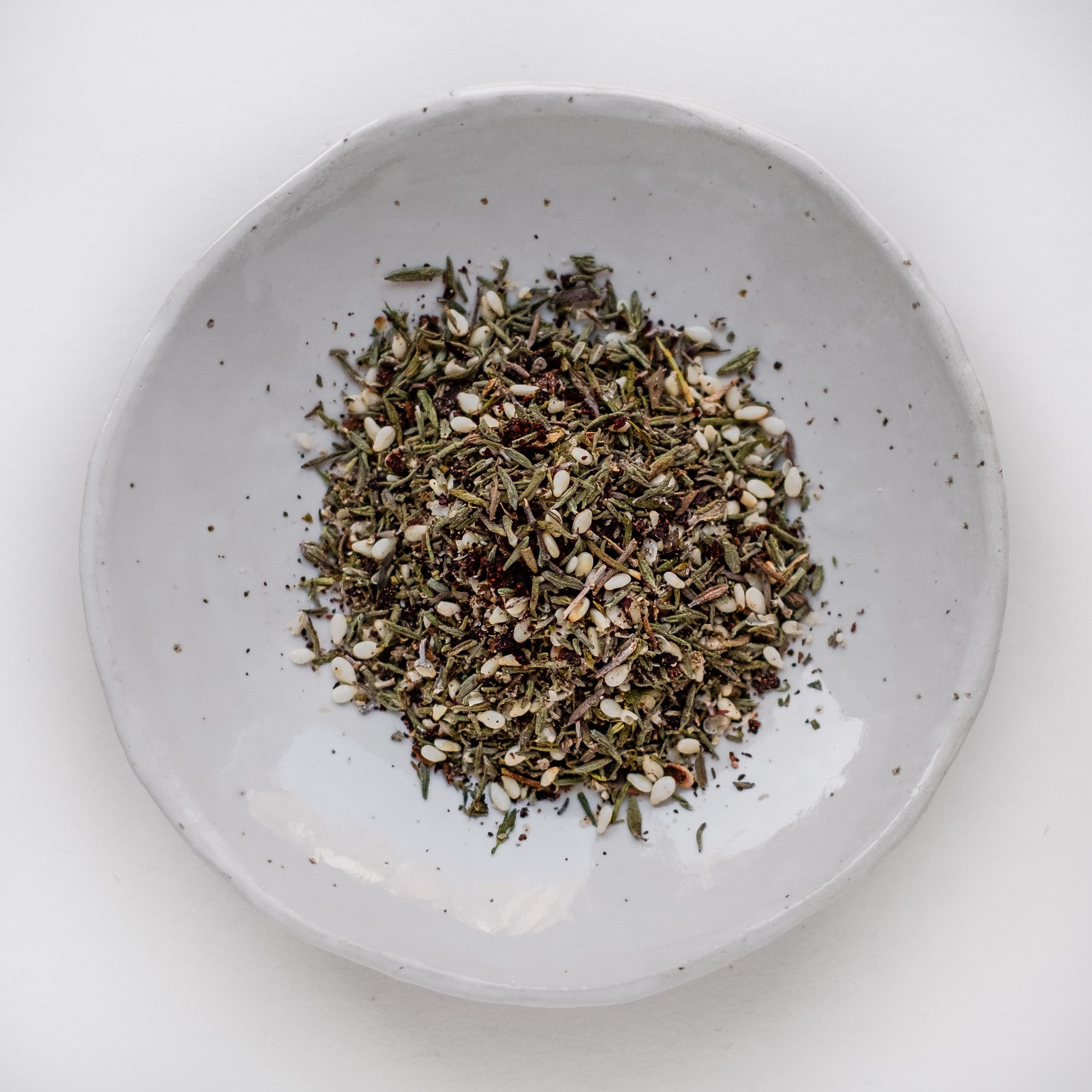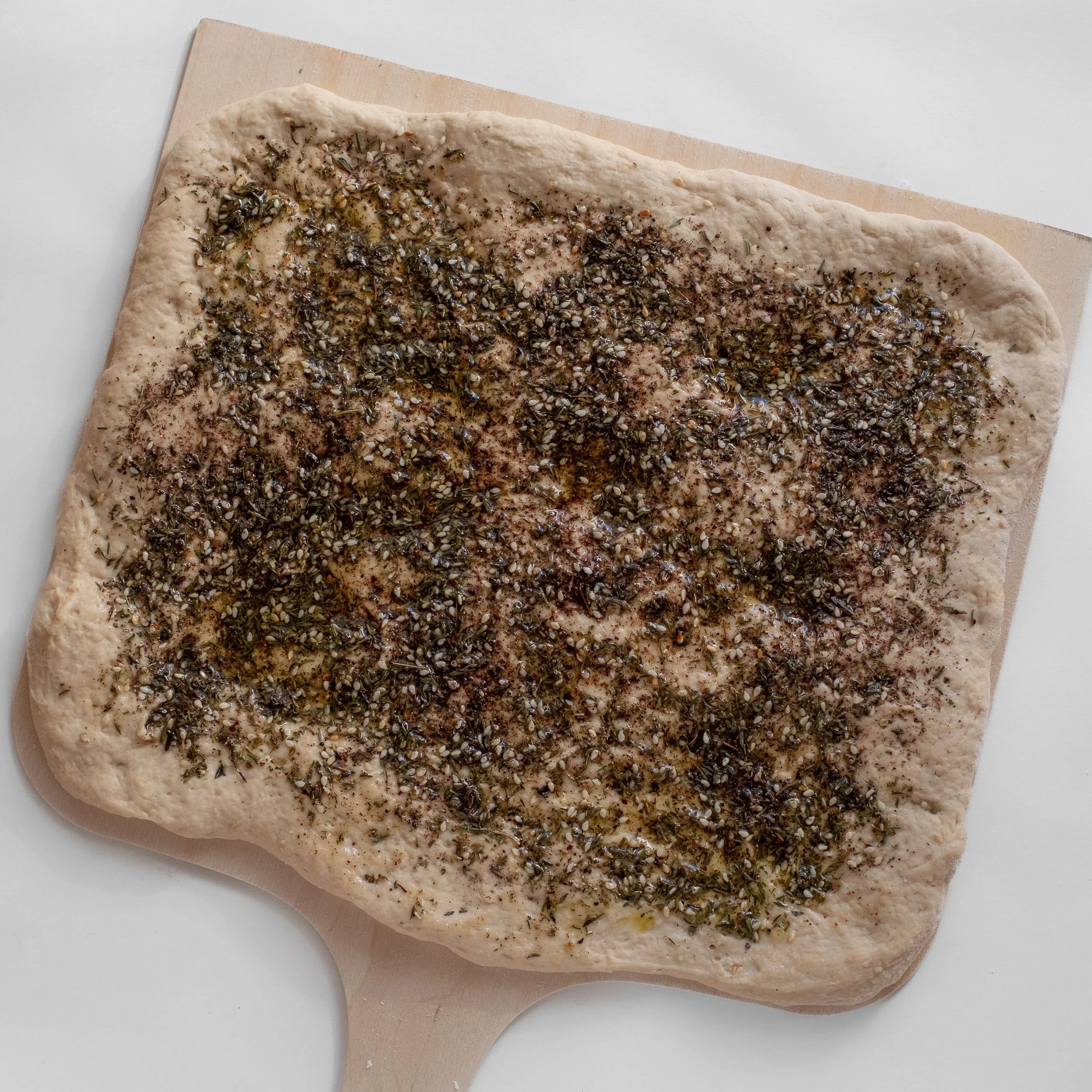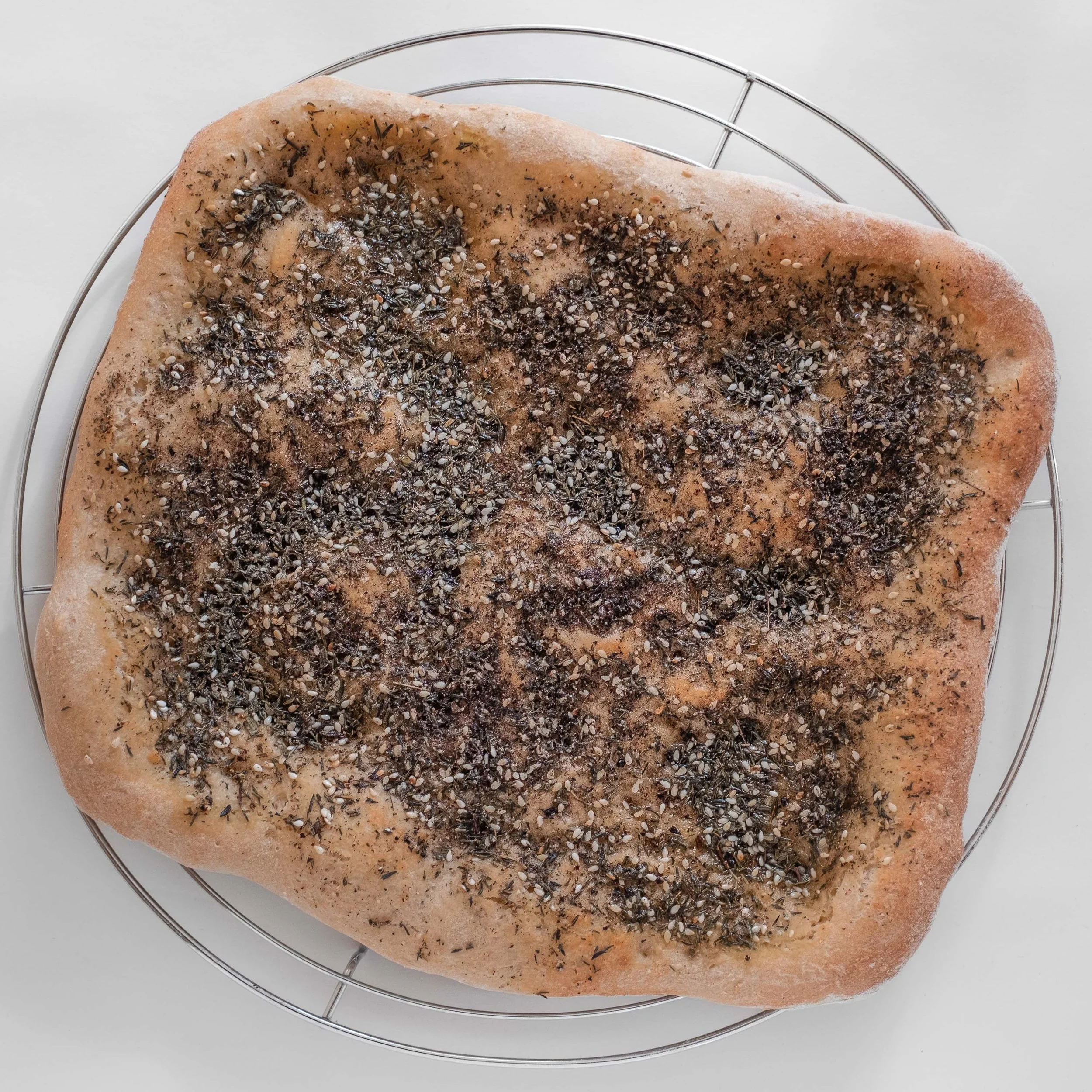The thyme and other leafy herbs contribute an abundance of fresh, herbaceous, and green notes. The sumac adds astringency, depth, and tartness. And the toasted sesame seeds, resinous and nutty, carry a mouth-watering richness and bring the parts together into a unified whole.
I first turned my attention to za’atar a few years ago, when a friend brought some back from Israel, along with a flushed-cheek account of its headline-news gastronomic potential. Sprinkled on everything and mixed into olive oil for drizzling on everything, her story went, but in my world all these “everythings” would of course have clear Middle-Eastern roots. Hummus, then, and fabulous dishes of eggplant, and stretchy yeast-risen flatbreads. But yes, za’atar had made itself seem essential.
The ready-made spice blends I tried usually seemed lackluster or ourtight dusty to me—too finely ground and perhaps stale. But their ingredient lists were straightforward enough, as was the relevant Wikipedia entry. A small batch was a success, so larger batches followed. Before she comes over, one friend now asks, if I bring a jar, can I get a bit more of that za’atar?
When making this spice blend at home, I’ve enjoyed the intuitive inexactness of the process. Using a mortar and pestle is a pleasure and leaves the spice mix coarse and the aromas intact, particularly if a good half of the ingredients are left as is. Adding small amounts of oregano and marjoram to the thyme bends the herbaceous profile in a direction perhaps reminiscent of Thymus capitatus, the wild species of thyme used in the Levant, or maybe just subtly different from plain old Thymus vulgaris, the primary ingredient in my version.
If you need my exact measurements, go ahead and ask. But you might find that it’s enough to just approximate the amounts shown in the photo at the top of this post. Sesame seeds, thyme, sumac, oregano, marjoram—that’s the order by weight, from most to least. By volume thyme comes first, way ahead of the sesame.
My favorite way to enjoy za’atar is atop a homemade flatbread using a wet yeasted or naturally fermented wheat dough, like the kind for pizza or foccacia. Before baking, I combine copious amounts of olive oil and za’atar and use this to top the bread, then into the hot oven it goes, to emerge, minutes later, golden and aromatic in that slightly refreshing, deeply satisfying way that za’atar delivers.

